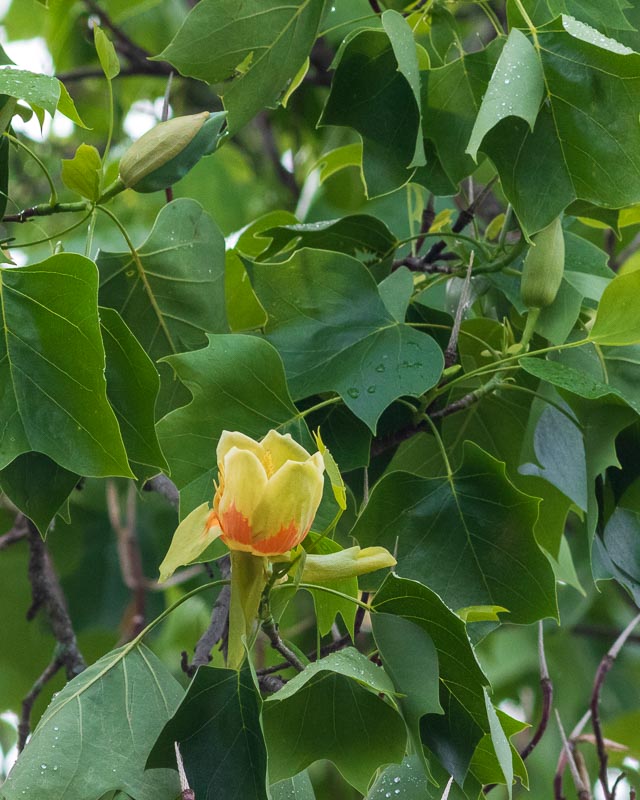Tulip Tree
Common Name:
Tulip Tree
Botanical Name:
Liriodendron tulipifera
Mature Size:
70–130 ft. tall, 30–60 ft. wide
Sun Exposure:
Full sun
Soil Type:
Rich, moist but well-drained
Soil pH:
Neutral to acidic
Bloom Time:
Spring
Flower Color:
Yellow-green, orange
Care:
Tulip trees have a storied history—in fact, you've probably seen them numerous times and not even recognized them, as they don't bloom until mature, at which point the flowers are so high up in the tall tree that they can barely be seen. A member of the Magnolia family, tulip trees are known for their massive height and sturdy wood. Early settlers used yellow poplar for railroad ties and fence posts. Favored by Native Americans and explorer Daniel Boone for making canoes, George Washington even planted several tulip trees at Mount Vernon.
Tulip trees can be messy, as their flower petals will litter the area below just after blooming. The aphids that the tree attracts also make a mess with their honeydew secretion. They also are notorious for dropping sticky sap, so avoid planting a tulip tree near an area where cars will be parked—it's no fun trying to remove the sap from a car windshield.
Soil:
These trees prefer slightly acidic, well-drained, deep soil amended with plenty of compost. They can handle clay, sandy, or loamy soils as long as the soil doesn't hold water too long.
Temperature and Humidity:
Tulip trees like a temperate climate, which is why it can typically be found in the Eastern United States. While it prefers normal moisture levels, it can tolerate drought in locations with high humidity.
Fertilizer:
Granular, liquid, or stake type fertilizers are recommended for tulip trees. Newly planted trees respond well to fertilization, but older trees generally don't require fertilization.
Pruning:
Because tulip trees grow so fast, pruning is imperative in order to keep them shapely and controlled. Their large branches are not particularly sturdy and can pose a hazard. Remove dead or weak growth in late winter and early spring, and do a thorough thinning every few years.
